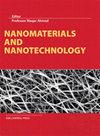单晶铜纳米切割过程中的材料去除机制和表面下缺陷演变
IF 3.3
3区 材料科学
Q2 MATERIALS SCIENCE, MULTIDISCIPLINARY
引用次数: 0
摘要
通过分子动力学模拟建立了单晶铜的多组大尺度切削模型,研究了切削参数对材料去除机理的影响。揭示了表面下缺陷结构的形成和分布,并深入分析了完整棱柱位错环的演化行为。研究表明,单晶铜的切屑和加工表面主要是在剪切力和挤压力的耦合作用下形成的。较大刃口半径或负前角的金刚石刀具可明显抑制切屑的形成。研究了缺陷原子的位置与 von Mises 应力分布之间的对应关系,结果表明,亚晶粒边界、位错线和非晶态原子处的剪切应力要比其附近区域的剪切应力大。两组堆积断层之间的交叉滑动形成了完整的棱柱位错环;同时,产生的多重 Lomer-Cottrell 锁阻碍了位错环的移动,并促进了加工硬化现象。这些研究成果对丰富塑料材料的纳米切割机理和技术具有重要的理论价值。本文章由计算机程序翻译,如有差异,请以英文原文为准。
Material Removal Mechanism and Evolution of Subsurface Defects during Nanocutting of Monocrystalline Cu
Multigroup large-scalenanocutting models of monocrystalline Cu were established by molecular dynamics simulations to investigate the influence of cutting parameters on the material removal mechanism. The formation and distribution of subsurface defect structures were revealed, and the evolution behavior of the complete prismatic dislocation loop was analyzed in depth. It was demonstrated that the chips and machined surface of monocrystalline Cu were mainly formed under the coupling effect of shearing and extrusion forces. A diamond tool with a larger edge radius or a negative rake angle could produce a noticeable suppression on the chip formation. The corresponding relationship between the location of defect atoms and the distribution of von Mises stress was studied, which indicated that the shear stress would become larger at the subgrain boundaries, dislocation lines, and the amorphous atoms than that in their nearby regions. The complete prismatic dislocation loop was formed by cross-slip between two sets of stacking faults; meanwhile, the generated multiple Lomer–Cottrell locks hindered its movement and promoted the work-hardening phenomenon. These research results are of great theoretical value to enrich the nanocutting mechanism and technology of plastic materials.
求助全文
通过发布文献求助,成功后即可免费获取论文全文。
去求助
来源期刊

Nanomaterials and Nanotechnology
NANOSCIENCE & NANOTECHNOLOGY-MATERIALS SCIENCE, MULTIDISCIPLINARY
CiteScore
7.20
自引率
21.60%
发文量
13
审稿时长
15 weeks
期刊介绍:
Nanomaterials and Nanotechnology is a JCR ranked, peer-reviewed open access journal addressed to a cross-disciplinary readership including scientists, researchers and professionals in both academia and industry with an interest in nanoscience and nanotechnology. The scope comprises (but is not limited to) the fundamental aspects and applications of nanoscience and nanotechnology
 求助内容:
求助内容: 应助结果提醒方式:
应助结果提醒方式:


